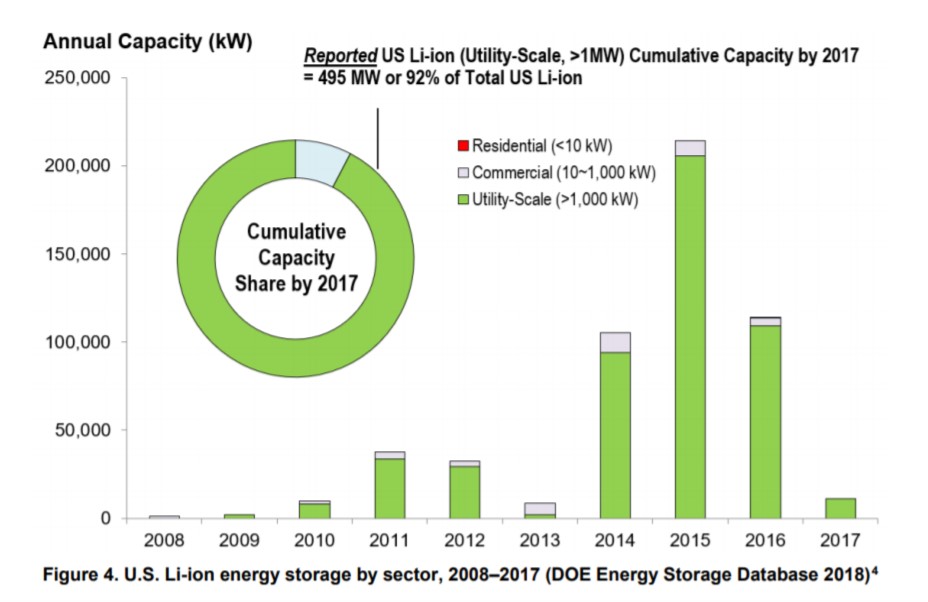Oregon utility Portland General Electric (PGE) has partnered with NextEra Energy on a large new energy facility that combines 300 MW of wind, 50 MW of solar, and 30 MW of battery storage – the first in the country to combine these three resources.
The project, known as the Wheatridge Renewable Energy Facility, will also be one of the largest solar installations in the state and the battery facility will be one of the largest in the country.
PGE President and CEO Maria Pope said:
“We’re moving aggressively to integrate smart grid technologies and renewable energy to give customers affordable, clean, low-carbon energy. Wheatridge will be a model for integrating renewable generation and storage to cost-effectively reduce emissions while maintaining a reliable grid.”
PGE already owns or contracts out numerous renewable energy facilities, including five hydroelectric dams and two wind farms that total 717 MW of installed capacity.
With the new facility as well as the pre-existing wind farms, the utility expects to produce over 1 GW of electricity from wind, enough to power 340,000 homes. And with this solar/wind/battery project, PGE expects to meet about 50% of customer demand with renewables.
The Wheatridge project will include 120 wind turbines manufactured by GE, but solar panel and battery specifics have yet to be determined. The facility will be located in Lexington, a small town three hours from Portland.
Wind developer Swaggart Wind Power originated the project in 2009 as purely a wind farm. NextEra purchased the project in 2017 and, the following year, PGE came on board after sending out a request for proposals for new renewable energy resources. Once PGE was involved, they tacked on the solar and battery storage facilities.
PGE estimates they’ll invest $160 million in the project, and will own 100 MW of the wind portion. NextEra will own the remaining 200MW and sell the electricity to PGE under a 30-year power purchase agreement (PPA). This split-ownership model allows both PGE and NextEra to share the risks associated with such a large project.
PGE and NextEra hope the wind portion will be operational by the end of 2020, with construction on the solar farm and batteries to start in 2021.
Battery Installations on the Rise
Batteries continue to make waves in the energy world, as prices continue to fall and more solar and wind join the grid.
As these renewable resources continue to increase, the problem of intermittency – the fact that many renewable energy sources can’t provide power 24/7 – becomes a larger issue. Batteries are seen as one of the best solutions to this issue and can fill the ‘gaps’ left when renewable sources aren’t generating electricity.
Installed capacity for large-scale battery storage installations has doubled every year since 2011 and, according to a 2018 report from the EIA, total utility-scale battery installations came in at 708 MW by the end of 2017 (the most recent data available when the report was written). For context, the US enjoys around 50,000 MW of solar capacity.
Most large-scale batteries are currently installed in California, the northeast, and Texas, but as utilities continue to install more solar and wind, they’ll undoubtedly grow into other areas.

According to the EIA report, more than 80% of these batteries are lithium-ion, the same technology Tesla uses in their EVs and Powerwalls and the same as our smartphones and tablets. Lithium-ion is compact and has great energy density (meaning it can store more electricity than other battery technologies). It also responds and recharges quickly and can withstand frequent charging and discharging, making them the best choice for utility-scale energy storage, where split-second reaction is a necessity.
Utility-Scale Solar + Storage Still in Nascent Stage
Only a handful of utilities have installed a joint solar/energy storage facility, but the numbers continue to grow.
The Kauai Island Utility Cooperative has signed PPA agreements for two solar+storage projects, one with Tesla for a combined 13 MW solar/ 13 MW battery system and the other with AES Corp for a 28 MW solar/ 100 MWh battery system. In Arizona, Tucson Electric Power also signed a PPA with NextEra – the same company running the Oregon Wheatridge project – for a 100 MW solar/ 30 MW storage facility. In May 2018, fellow Arizonan utility SRP opened a 20 MW solar/ 10 MW battery facility – also in partnership with NextEra.
PGE’s Wheatridge project isn’t quite like these projects though, as it not only combines solar and energy storage, but wind as well.
We’re still in the early stages for co-located solar and storage, but with costs of both technologies falling, it’s set to grow. In November 2018, NREL published a study on costs of co-locating utility-scale solar and energy storage. It estimates that installing solar and batteries on the same site can drop installation costs by about 8% – millions of dollars depending on the size of the project – thanks to lower installation costs, electrical equipment costs, interconnection fees, and overhead.
With PGE’s project, we’re not only seeing the next step in the energy industry – combining solar and batteries into one, singular project. We’re actually peering past it, to see what else we can do, what the next step is after this one.